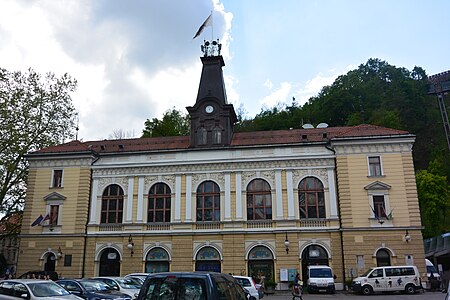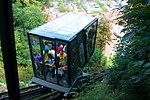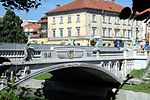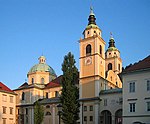Ljubljana Puppet Theatre

The Ljubljana Puppet Theatre (Slovenian:Lutkovno gledališče Ljubljana) was founded in 1948, originally as the City Puppet Theatre, and remains the premier Slovenian theatre for puppetry. It is located in Ljubljana, the capital of Slovenia. It had its opening premiere on October 10 as part of the Ljubljana Festival. The first art director was Jože Pengov, Slovenian director, playwright, actor, writer, translator, publicist and founder of the modern craft of Slovenian puppet theater. Today, the Theatre hosts and participates in numerous European and Slovenian festivals.The theatre stages puppetry shows but also live action dramas, musicals, and other performance entertainments.The theatre has four stages accommodating between 60 and 210 seats: St Jacob's Stage, The Main Stage, Small Stage, and Stage Under the Stars located on the top floor with a glass roof up to the night skies. The theatre also contains a small Museum of Puppetry which opened in 2015.
Excerpt from the Wikipedia article Ljubljana Puppet Theatre (License: CC BY-SA 3.0, Authors, Images).Ljubljana Puppet Theatre
Krekov trg, Ljubljana Trnovo
Geographical coordinates (GPS) Address Phone number Website External links Nearby Places Show on map
Geographical coordinates (GPS)
| Latitude | Longitude |
|---|---|
| N 46.0502 ° | E 14.5101 ° |
Address
Lutkovno gledališče Ljubljana
Krekov trg 2
1000 Ljubljana, Trnovo
Slovenia
Open on Google Maps








